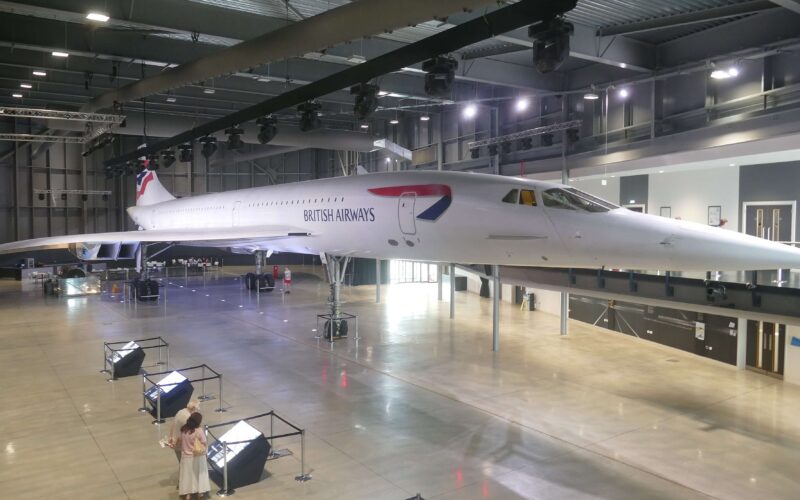The last Concorde to be built and the last to fly
On June 13, 1980, British Airways took delivery of its final Concorde, Alpha Foxtrot. The delivery of G-BOAF took BA’s supersonic Concorde fleet to a total of seven.
While in British Airways’ fleet, Concorde made almost 50,000 flights, flying more than 2.5 million passengers at supersonic speeds.
During their 27-year service, the legendary aircraft carried the rich, famous, and even royalty at more than twice the speed of sound.
G-BOAF, like other Concordes, was originally registered as G-N94AF. The American registration with the British prefix ‘G’ was no coincidence and formed part of a deal with U.S. operator Braniff International Airways.
The agreement saw Concorde operate between London and Washington under BA, before the plane was given to Braniff who, using its own crew, would operate subsonic from Washington to Dallas and back.
Braniff International Airways terminated the service only 12 days before Alpha Foxtrot was delivered to BA and the Concordes were soon re-registered to BOAC styles.
Circumnavigating the globe
On April 1, 1989, G-BOAF departed London Heathrow on a circumnavigation of the world, covering an impressive 38,343 miles.
During the trip, on April 12, Concorde flew from Christchurch, New Zealand to Sydney, Australia and, while climbing through 44,0000 feet, the aircraft lost part of the upper rudder.
With no noticeable effect in flight, the flight crew only found out on arrival into Sydney when air traffic control spotted the damage as the plane taxied in.
Air France 4590
Following the crash of Concorde in Paris on July 25, 2000, both British Airways and Air France grounded their Concorde fleets. G-BOAF was selected as the development aircraft to undergo improvements to the design flaws, which came to light following the accident.
The Concorde was fitted with new tires, to prevent disintegration and its fuel tanks were lined to protect against rupturing. BA also spent £1m upgrading the Concorde cabin.
On September 11, 2001, at 10:30 local time, G-BOAF departed Heathrow on the first return to service flight of Concorde following its grounding. The three-hour and 20-minute test flight carried BA staff and upon its return to Heathrow, they would learn of the terror attacks in America.
The events of that day caused a sharp downturn in the airline industry and signified the beginning of the end for Concorde.
Retirement
On April 10, 2003, British Airways and Air France announced they would retire the aircraft type later in the year.
Concorde gained spectacular public affection over the years, and during its final flights the aircraft was granted special permissions, including a parallel landing at Heathrow and low flying over British cities during a farewell tour.
Concorde was officially retired on October 24, 2003.
As well as being the last Concorde delivered, G-BOAF was also the last Concorde to ever fly, escorted by the legendary Spitfire, the Concorde landed at Filton Airport, Bristol, its final resting place, on November 26, 2003.
Today, G-BOAF, once a part of the flagship Concorde fleet of British Airways, is housed in a hangar at the Aerospace Bristol museum.

